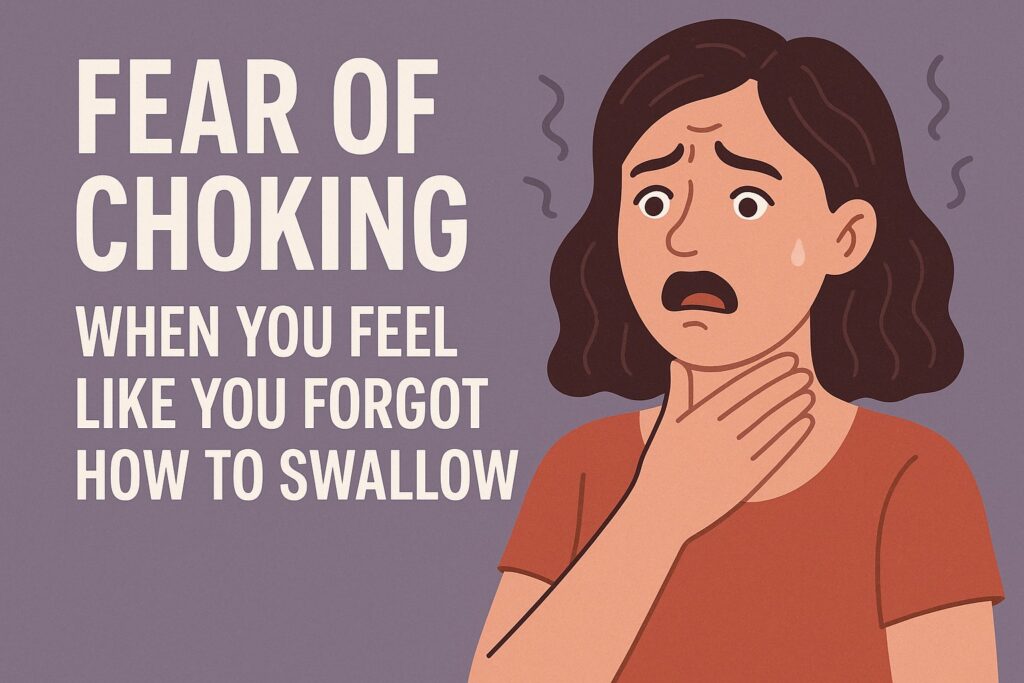Book Appointment Now
Why You Panic When Eating — And How to Rewire the Fear

Hey, it’s Edwin here. Today, I want to unpack something that so many people with swallowing anxiety or fear of choking struggle to understand:
👉 Why does eating — something that used to feel so automatic — now make me panic?
Let’s break it down.
It’s Not About the Food. It’s About the Fear.
Eating and swallowing are meant to be automatic, effortless, and involuntary responses. Your body knows how to chew, swallow, and digest without needing your conscious input. But when you develop a fear of choking, that entire system gets hijacked by fear.
This fear often starts with a single event:
- Maybe you choked once while eating due to poor posture.
- Maybe you saw someone else choke and internalized the fear.
- Or maybe you were simply under a lot of stress when eating, and your nervous system linked eating with danger.
Whatever the case, your nervous system didn’t get the chance to fully process that incident. It froze in fear. And when a fear isn’t processed, it becomes a trauma memory — stuck in your system like a glitch in the software.
Your Brain Thinks It’s Protecting You
When the brain perceives something as a threat, it creates protective mechanisms to keep you safe. So if choking once almost made you panic or feel like you were going to die, your brain decided,
“Eating is risky. Let’s avoid it or stay hyper-aware every time we eat.”
Even if it’s been months or years since that incident, your brain is still operating as if that danger is happening now.
That’s why, even when your conscious mind knows food is safe…
Your subconscious mind is still in high alert.
You might try to drink water after every bite.
You might blend your meals.
You might chew for way too long.
These strategies help you cope. But they don’t solve the root of the fear.
The Real Problem? Control.
One of the biggest mistakes people with swallowing anxiety make is trying to control the swallowing reflex.
Swallowing is automatic. But the moment you try to control it — because you’re afraid something will go wrong — you interfere with your body’s natural rhythm. That’s when things start to feel worse:
- You overthink every bite.
- Your throat muscles tighten.
- You feel like the food won’t go down.
And all of this is happening because your nervous system is in fight-or-flight mode.
What Healing Actually Looks Like
True healing isn’t about learning how to swallow again. It’s about helping your nervous system feel safe with swallowing again.
It’s about telling your body:
“That incident is over. I trust you now. It’s safe.”
And that happens not through logic or willpower — but through deep, subconscious work. You have to reprogram the fear stored in your body and help your system reset to its natural baseline.
This is what I help people do through mind-body integration and subconscious healing work. When you work at that level, the panic starts to fade. You stop needing to micromanage your meals. And swallowing starts to feel normal again — just like it used to.
Final Thought
You’re not broken.
There’s nothing wrong with your throat.
Your body is simply responding to an unprocessed fear.
Once you resolve that root fear, your system recalibrates — and you’re able to enjoy food again, without panic, without blending, and without fear.







